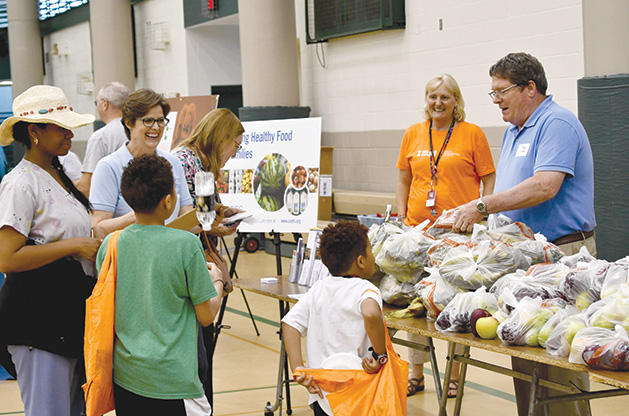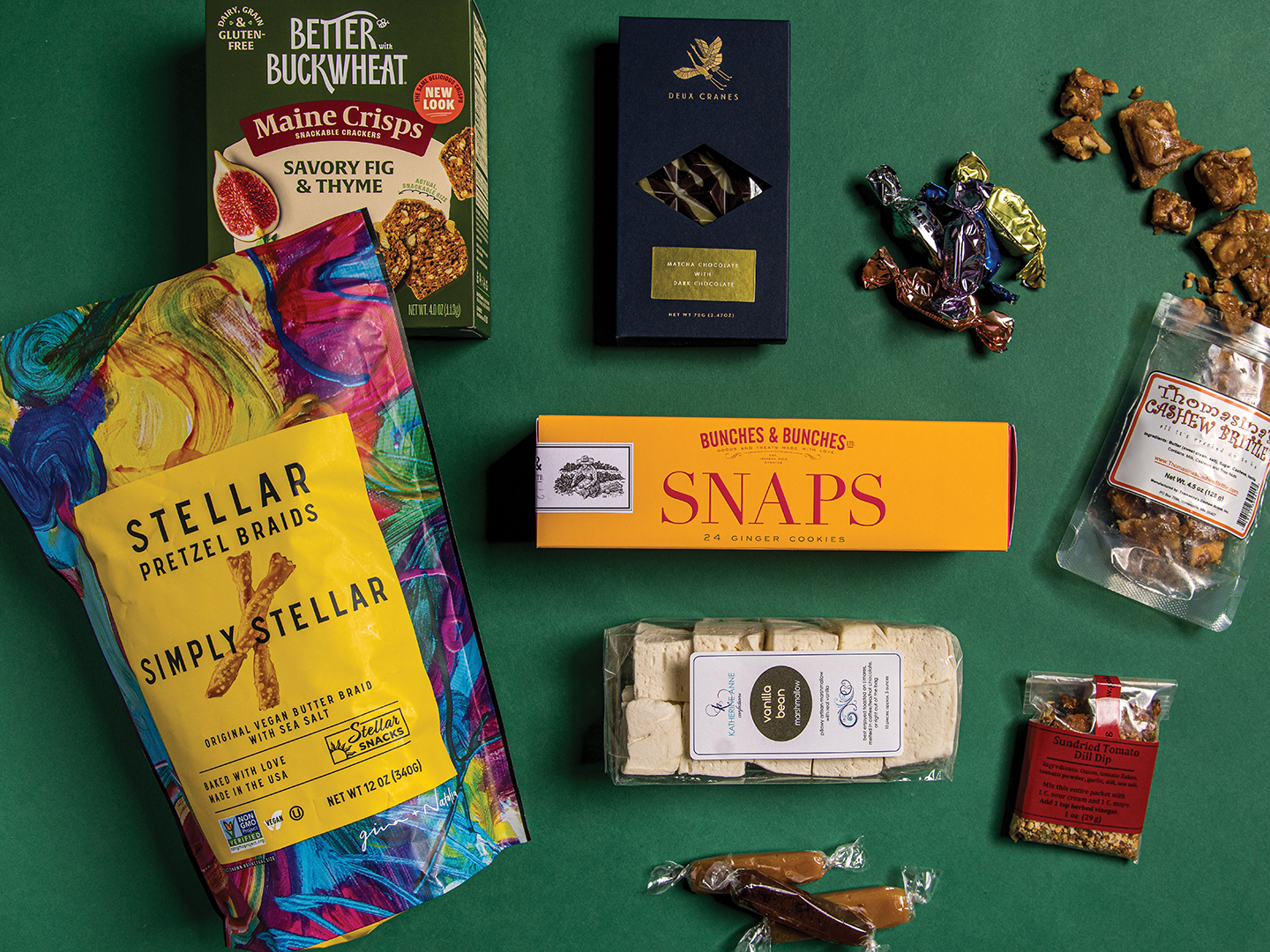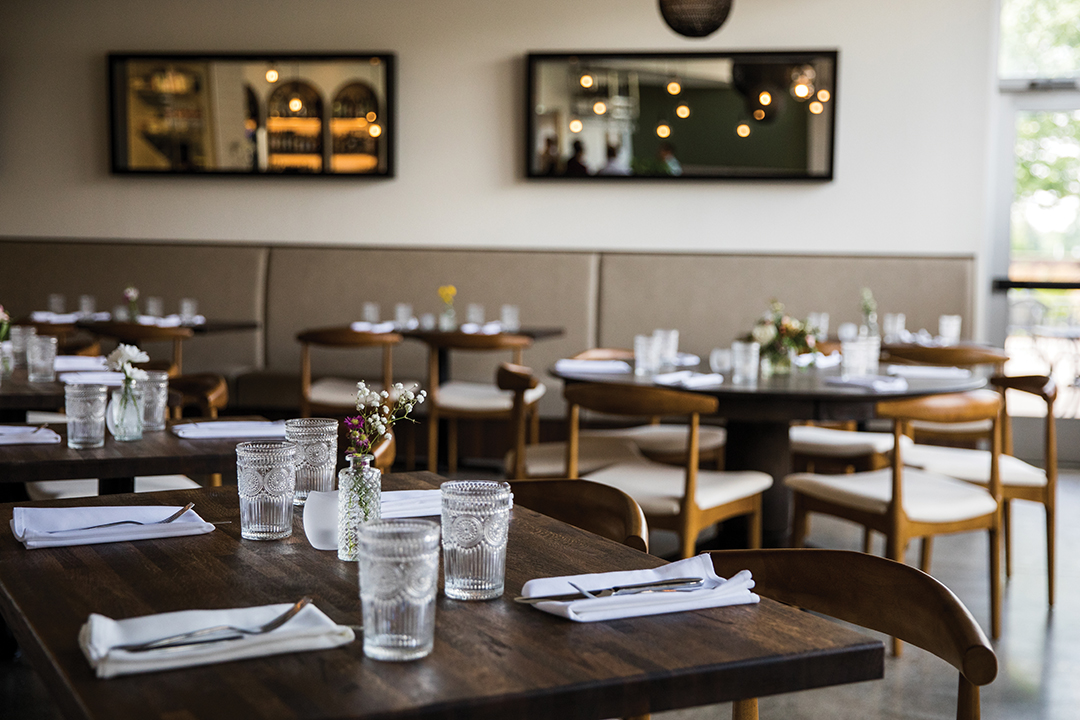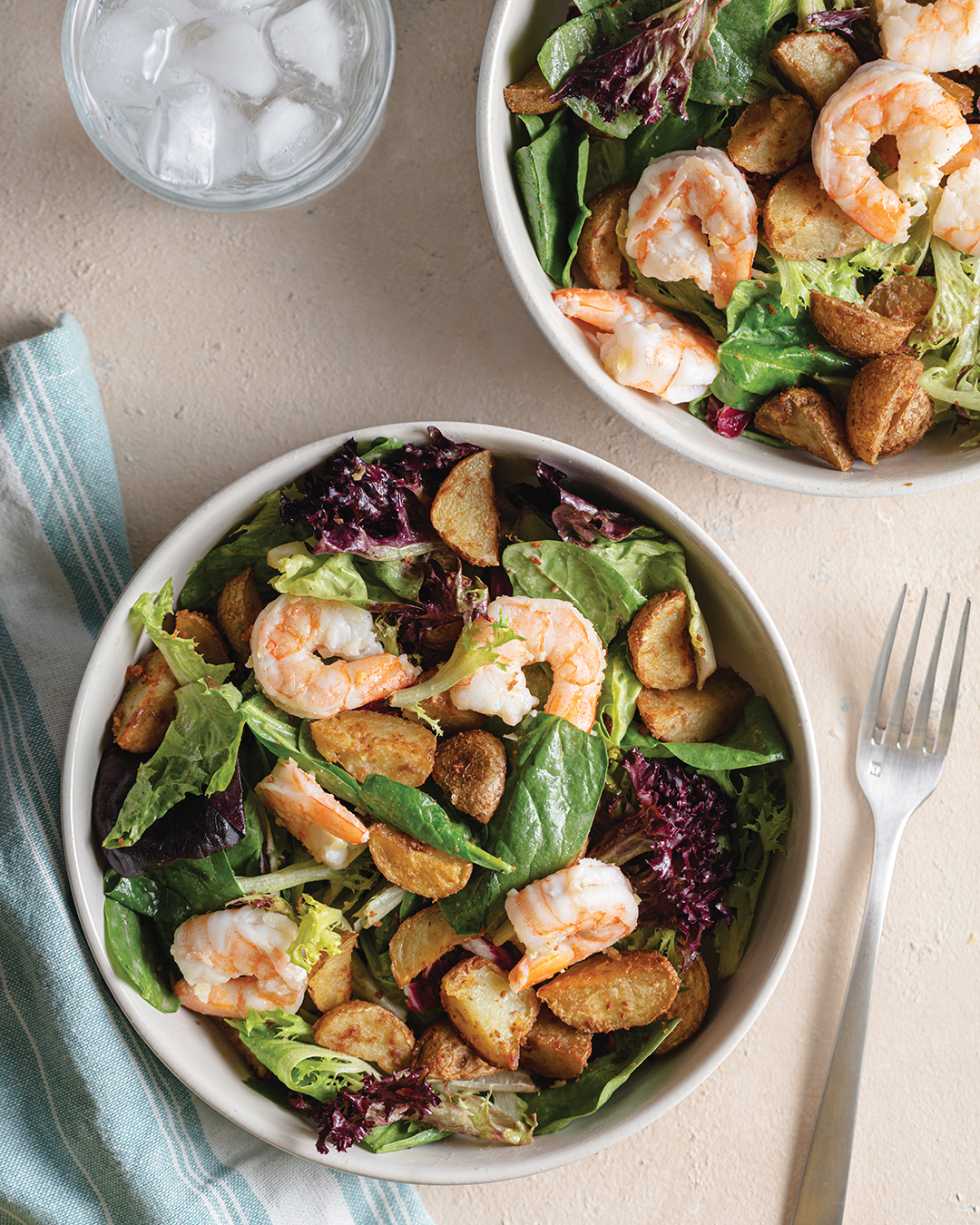
Volunteers chat with families about healthy fruit and veggies at a local gathering. Photo: Julie Prior-Miller
Learn how you can help ensure all students have access to food year round.
“Most people don’t understand that hunger is an issue here,” says Bob Klatt, the adaptive planning chairman for No Kid Hungry 833. “But 1 in 5 kids in our district is food insecure.”
Klatt, along with Cheryl Jogger of SoWashCo CARES, and experts from Second Harvest Heartland are leading a collaboration of local volunteers, community leaders, businesses and non-profits to combat hunger with community-driven events that are made for everyone.
“If you look nationally and locally, the need around hunger is increasing in the suburbs, and the suburbs historically are a geographical area that has not gotten a lot of attention in terms of support,” says Michelle Heery of Second Harvest, which works to end hunger through community partnerships. “Last year we helped pilot the No Kid Hungry initiative in District 833, and were able to increase the number of meal sites that were operated, and increase the number of kids who have access to food.”
Heery also explained that food insecurity is not always so obvious. A major medical event, job loss, or divorce can create a situation that makes it difficult to put food on the table. One of the biggest challenges to meeting the needs is often getting over the stigma associated with getting help.
“We find that people are hesitant to take the food because they don’t want to take anything away from someone who needs it more, but our program is designed to not discriminate,” explains Jogger. “We want everyone to come and everyone to feel welcome, because if it’s truly a community meal where everyone is invited—whether you need it or not—that’s how we will get past the stigma.”
Local faith-based organizations, businesses and District 833 schools will come together again this summer to increase opportunities for students to receive meals and snacks, in addition to the federal free and reduced lunch programs that exist in the schools.
A few examples of efforts include the local food shelves, Christian Cupboard Emergency Food Shelf and Friends in Need, expanding their programming to reach more families over the summer. SoWashCo CARES offers a summer pack, which last year provided more than 200 students with a backpack with a month’s worth of food for over summer break. Community Education’s CE Skoolie bus will be out and about this year for the Summer Skoolie program. The painted mini-bus travels to locations around the district, and offers free activities and snacks for families. Keep an eye out for family-fun events held at different sites throughout the summer.
In addition to participating in community events, community members and organizations are encouraged to find ways to be involved.
“Last year we had lots of community partners like Hy-Vee, Jerry’s, Big Frog and YMCA, and we are hoping to do the same this year,” adds Jogger. “It’s truly a collective impact mission.”
“The primary role of the adaptive planning committee is to meet the needs of kids when they are not in school. We are looking for participation in the planning committee from all community organizations in the district,” adds Klatt. “We have meetings regularly scheduled and people can come to learn about how to help.”
“We have kids we can help in every one of our 24 schools,” says Cheryl Jogger of SoWashCo CARES. “And these kids deserve to be helped.”
No Kid Hungry 833
For a schedule of events and info about getting involved, visit nokidhungry833.org.
Instagram: @sowashcocares + @secondharvestheartland






















